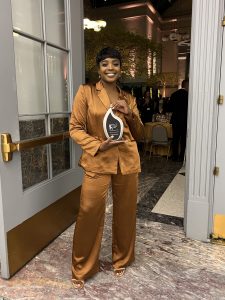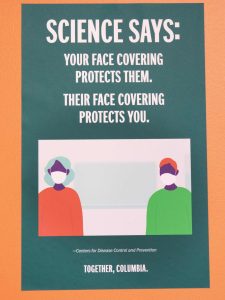It’s easy being green – at least that’s what a recent event announcement proclaimed. With environmental issues at the forefront, many Chicagoans are wondering what they can do to reduce global warming and live more sustainably. A June 7 event, part of an Illinois Humanities Council series called In the K/Now and hosted at the Chicago History Museum, gave local residents some ideas about how to lead a greener life.
The city’s newest green building, the Center on Halsted, grabbed much of the event’s spotlight. Center Chairman Robert Kohl spoke proudly of the building at 3656 N Halsted St. – for both its design and purposes.
“When we began planning and designing the building, we knew of (Mayor) Daley’s fondness for green,” Kohl said, and thought “how cool it would be to have a green roof.”
One center advocate understood the LEED (Leadership in Energy and Environmental Design) codes and knew that “a lot of grant money was available,” Kohl said. “And because we had significant commitments from city and federal government, it felt like good stewardship for us as leaders of our communities to do this green building.”
The center earned a silver rating in the LEED program, which provides points for design, construction and operation. The five areas evaluated are: sustainable site development, water savings, energy efficiency, materials selection and indoor-environmental quality, according to the U.S. Green Building Council, which established the rating system.
In Illinois, there are more than 300 LEED-registered projects, according to the U.S. Green Building Council project list dated April 12, 2007. These projects include government and office buildings, libraries, schools and non-profit organizations. Slightly more than half of the projects are in Chicago.
Chicago encourages green building in part by expediting the permit process. Erik Olsen is green projects administrator for the city of Chicago and maintains a web site, GreenBean, that tracks all green buildings completed and being constructed in the area.
“We’re very concerned about green-washing,” Olsen said. “Several developments in the city are calling themselves green but are not.”
Olsen did not name names, but said the city has begun to use bright signs on building sites to identify green buildings as part of its marketing and education efforts. Third-party certification is key, he said, whether through LEED for large residential and commercial projects or through Chicago Green Homes or Energy Star for small residential projects.
The best results are achieved when developers, architects and others involved work together early in the process. City officials worked closely with the Gensler firm, which designed the Center on Halsted. Gensler created a unique water conservation method that collects water from the roof and underground in a cistern, then uses that water to flush the building’s toilets.
“Water is collected in tanks, cleaned and sent up to toilets,” said Gensler architect Jason Longo. “We (will) save over one-half million gallons of water per year in the center and reduce water consumption by 80 percent.”
Water conservation is a priority, Longo said, because suburbs are running out of well water and increasing amounts are being taken from the lake and not replaced. Gensler is now working with the city to create regulations for water efficiency methods to be used in other green buildings.
“Perfectly clean water is being flushed down the toilet,” Longo said. “As much as 15 million gallons of water every 15 minutes is used in Chicago.”
After a lively discussion on green buildings, Jenna Rose of A Fresh Squeeze, provided tips on reducing junk mail, re-using water bottles and recycling. Despite sounding like a juice outlet, the group’s web site and twice-weekly e-mails provide suggestions for Chicagoans to “green up” their lives.
“We cover any things that help reduce environmental impact,” Rose said. “And we try to provide action ideas (people) can apply in their own lives.”
Recent e-mail topics included which bags to use at grocery stores (answer: whichever the person is more likely to re-use), staying cool this summer while saving money, planning a green wedding and information on a local honey cooperative.
“It’s about making smart choices and getting the same (or better) results,” Olsen said
Individuals and businesses can take steps toward sustainability, panelists said, by conserving resources. And many of the greener choices can save people money, too.
“We’re seeing a huge shift with cities, non-profits and corporations,” Longo said. “Do the math. We are doubling our population, and there are only so many resources.”
Categories:
Citywide Eco & Environment Public
Tags:
center on halsted conservation environment green buildings illinois humanities council leed






Be First to Comment